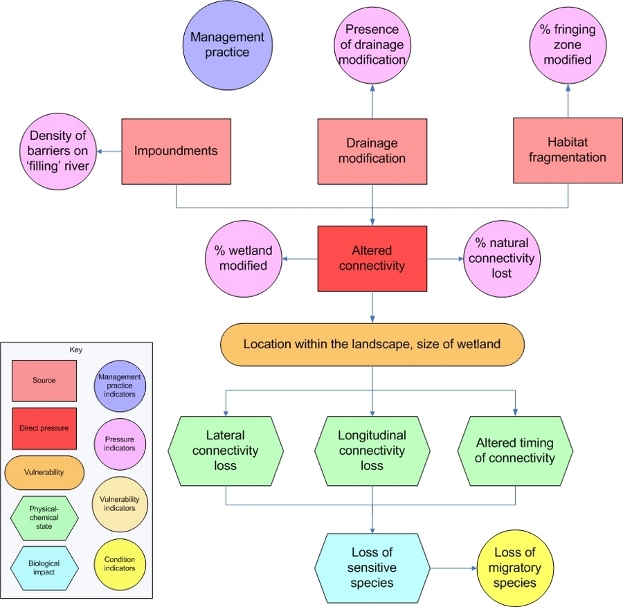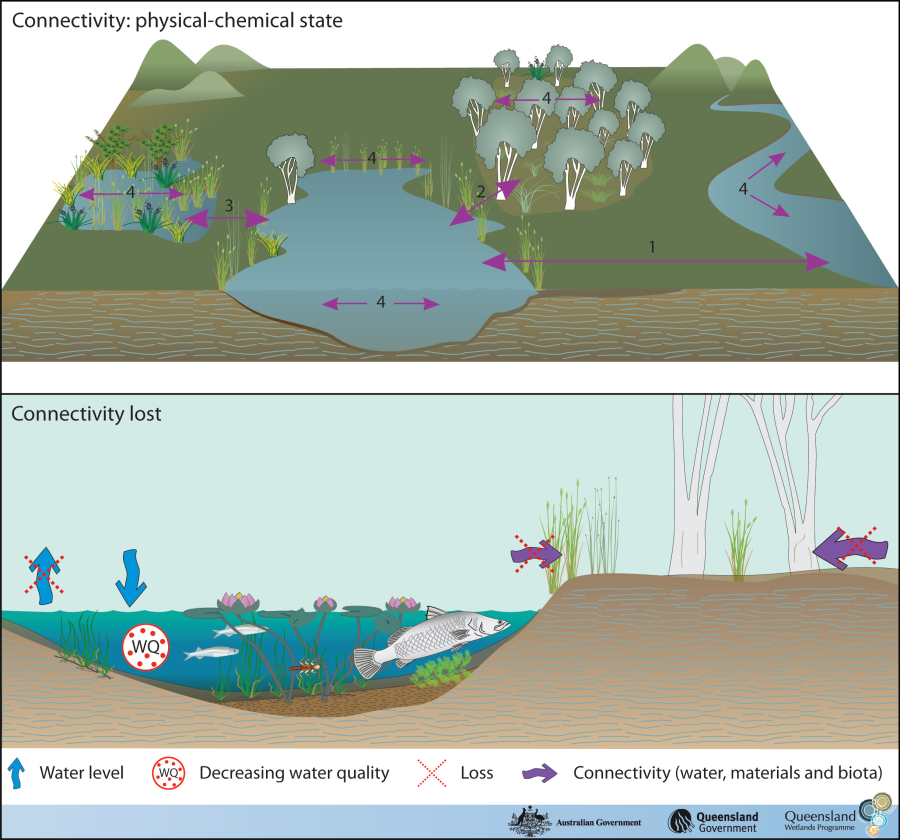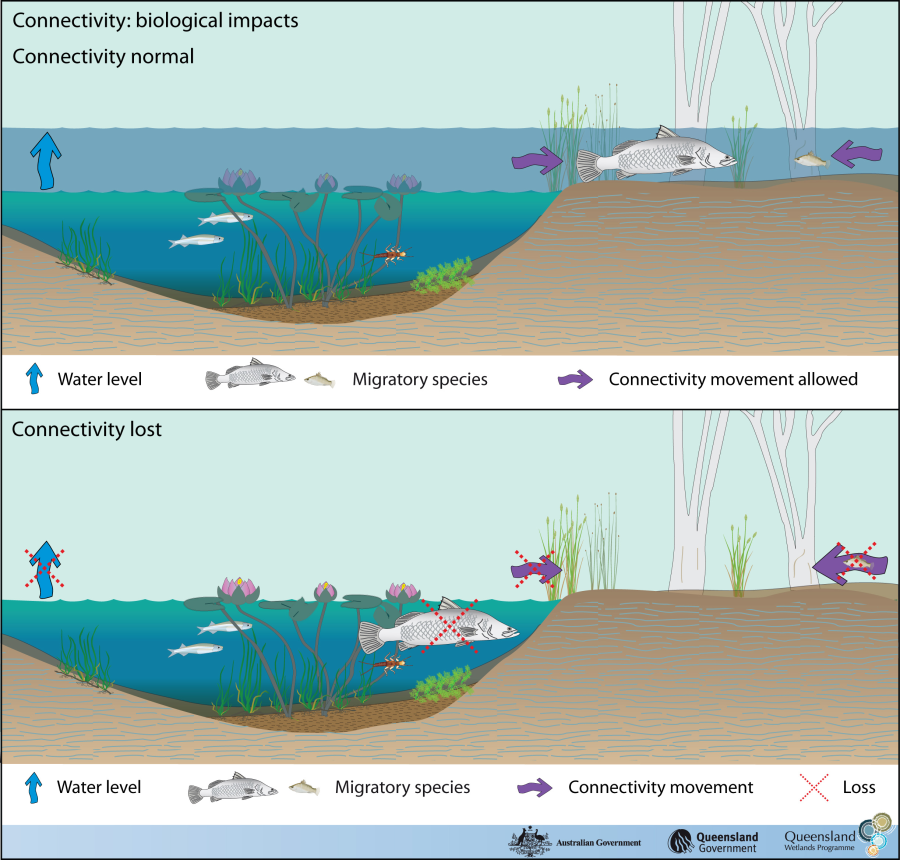|
|
Connectivity – StateConnectivity – StateFlow chart showing the major elements associated with connectivity management
Click on elements of the flow chart or select from the tabs below
The movement of water (with its associated parameters, e.g. nutrients, organic matter) and organisms from place to place is the main aspect of connectivity considered here. There are 2 aspects of connectivity: Lateral connectivity is the ability of biota, water and materials to move from one distinct system such as a floodplain lake to another such as a river (1), tree swamp (2) or non-floodplain grass-sedge-herb swamp (3). Longitudinal connectivity is the ‘upstream-downstream’ or within-system connectivity (4) that is important for the movement of species within the wetland. The duration and timing of periods of connection can also be very important. A loss of connectivity can result in decreasing water quality.
Human activities generally will result in a decrease in connectivity, however, occasionally some activities such as the digging of drains/channels between systems may increase connectivity which may not necessarily be good as it could alter the natural functioning of the wetlands, e.g. by introducing different genetic stock or species. The duration and timing of periods of connection can be very important to allow opportunities for spawning, dispersal and migration. Species that migrate between wetland systems as part of their life cycles, such as diadromous fish, are particularly susceptible to a loss of lateral connectivity.
Last updated: 22 March 2013 This page should be cited as: Department of Environment, Science and Innovation, Queensland (2013) Connectivity – State, WetlandInfo website, accessed 8 May 2025. Available at: https://wetlandinfo.des.qld.gov.au/wetlands/management/pressures/lacustrine-palustrine-threats/connectivity/state.html |

 — Department of the Environment, Tourism, Science and Innovation
— Department of the Environment, Tourism, Science and Innovation




